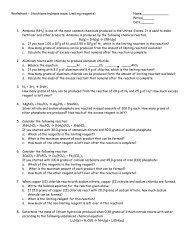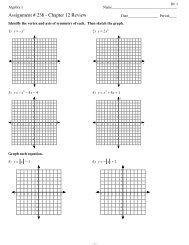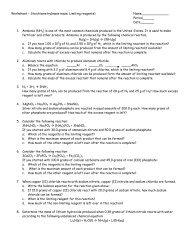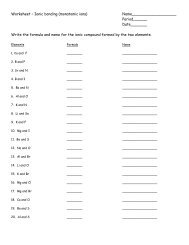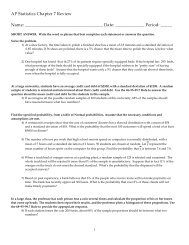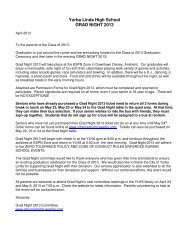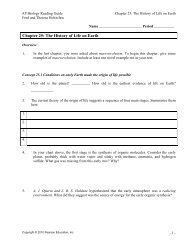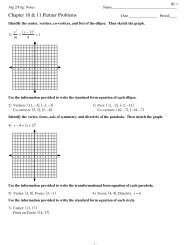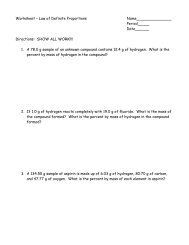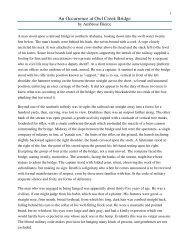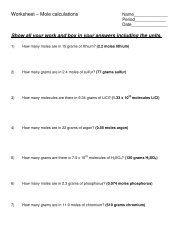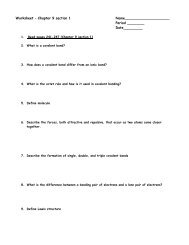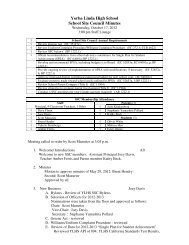Chapter 36: Resource Acquisition and Transport in Vascular Plants
Chapter 36: Resource Acquisition and Transport in Vascular Plants
Chapter 36: Resource Acquisition and Transport in Vascular Plants
- No tags were found...
Create successful ePaper yourself
Turn your PDF publications into a flip-book with our unique Google optimized e-Paper software.
AP Biology Read<strong>in</strong>g GuideFred <strong>and</strong> Theresa Holtzclaw<strong>Chapter</strong> <strong>36</strong>: <strong>Resource</strong> <strong>Acquisition</strong> & <strong>Transport</strong> <strong>in</strong> <strong>Vascular</strong> <strong>Plants</strong>8. What are the most important plant cell transport prote<strong>in</strong>s? How do they work?9. What is membrane potential? How can it be established?10. Expla<strong>in</strong> cotransport.11. What is osmosis?12. Plant cells have a rigid cell wall, which adds another factor that affects osmosis: pressure.Def<strong>in</strong>e water potential.The equation for water potential is = s + p, , where is water potential, s is solute potential, <strong>and</strong> p is the pressure potential. The underst<strong>and</strong><strong>in</strong>g of this formula is an objective from Laboratory 1 <strong>in</strong> theAP Laboratory book.13. By def<strong>in</strong>ition, what is the s of pure water?14. How does add<strong>in</strong>g solutes to pure water affect water potential?15. The solute potential of a solution is therefore always ____________. (negative or positive)16. What is pressure potential? Under what conditions will it decrease?A B C DCopyright © 2010 Pearson Education, Inc. - 2 -



